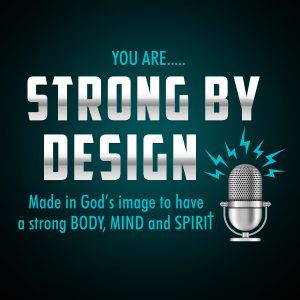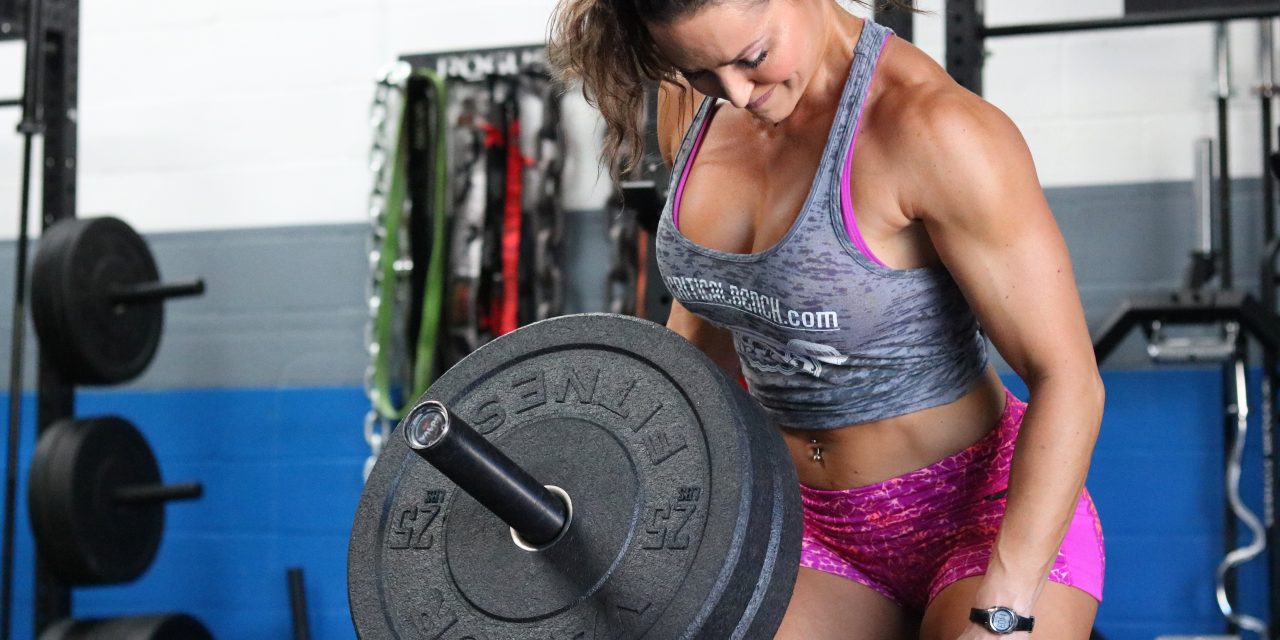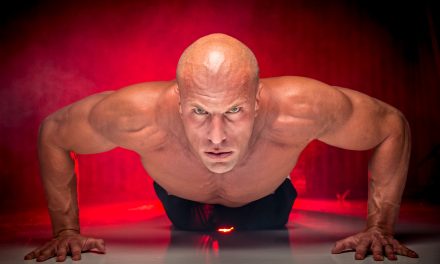On this episode of Strong By Design, Coach Chris sits down with two time Ms. Figure Olympia, fitness coach and author, Erin Stern. They go into depth on why training like an athlete is better for the physique. Also, stay tuned to hear about the free 5-minute glute workout.
Want the 5-Minute Glute Workout for Free? Go here or text “Glutes” to 345345
“Look at different athletes, if you want to look that way, then you need to train like them.”
-Erin Stern


Time Stamps:
2:05 Erin Stern’s athletic background
4:17 Why is training like an athlete better for physique
8:37 Erin’s suggestions for a 90 day transformation
12:30 Glutes workouts
15:52 Top 3 struggles beginning deal with
17:14 The 6 foundational exercises beginners should master
18:30 Encouragement for beginners
19:36 IFBB Elite Pro Competition in South Africa
Resources
Connect with Erin Stern
Connect with Critical Bench:
Transcript
Chris: Hey there welcome. This is Coach Chris. Here at the Critical bench compound. And thank you for joining us with the Strong by Design Podcast. I’m sitting here today with two-time Miss Figure Olympia winner Erin Stern. As we’ve worked with Erin in the past. It’s a pleasure to have her here again. Nice to see you.
Erin: [00:01:10] Thanks for having me.
Chris: [00:01:11] So Erin is a what we are going to talk about is train like an athlete. That’s why we have her here. And that’s the first thing that kind of came to my mind when I thought about what am I going to talk about with Erin. Who is you know known for her figure competition. But what makes her, her background’s in track and field. She was a really high level track and field athlete. And you were like this close to Olympic trials back in when?
Erin: [00:01:44] In 08. I was 3 centimeters away from the Olympic track.
Chris: [00:01:47] So I mean that’s you were doing nothing like figure based back then. Right. You were just an athlete training like an athlete. And I how I could probably use some of this and do a couple of years after that is when you got into figure competition or?
Erin: [00:02:03] Well actually it was the summer of 08. I miss the Olympic qualifying standard by three centimeters and I was devastated and I was like I don’t have a purpose anymore in life. And someone suggested figure competitions in September of 08. It was my first amateur contest probably in November and won the Olympia a year and a half later.
Chris: [00:02:25] Wow. Which is like probably unheard of. Somebody’s been working for years and years and years not getting there and you just pop up on the screen of the circuit. Like whoa.
Erin: [00:02:36] But I have been working for years and years. I was lifting probably for 10 years before I even got on the stage just not for that specific purpose.
Chris: [00:02:44] But I had that instant stage presence and ability to like because it’s a little bit different obviously. Right. It’s like showing your body instead of like performing. Yeah like by showing your athleticism and you know.
Erin: I t’s like a beauty pageant for muscle.
Chris: [00:03:00] Right exactly.
Erin: [00:03:01] It required a little bit of work. In my first show I just kind of flip my hair upside-down and spraying with hairspray and went out on stage. And I had a friend of the family, he was like “Honey you look like a linebacker.” He was like let’s fix you. So I work a lot with posing in the presentation. Like being a girly girl is a lot of being on stage.
Chris: [00:03:22] Wow. Yeah totally. But you obviously, you got in right there quite nicely. You know you get used to it and took off. So kind of like the first official question I guess then. Have to be give some of the backstory. Why is training like an athlete in your opinion? Because I know it’s this is how I feel. Why is it the best approach for size and strength gains? Like you go into instead of like kind of a traditional bodybuilding and you know that there are a lot of people out there doing isolation, isolation. But why it is the way you train like pretty much better for physique?
Erin: [00:04:02] Well I have to say that I train both ways. I train like an athlete and I train like a body builder. That being said I feel like whenever you train isolation so if you look at back day or a chest day. Separately the muscles might look good but they might not flow together aesthetically. Because they’re not really working together. And I think that when training like an athlete you’re using your entire body. You’re using power, you’re using speed and strength. And you’re recruiting a lot more fast twitch muscles. And fast twitch muscles are rounder and fuller and I believe a lot more beautiful on stage. Looking like an athlete is so important. So you have to train a little bit like a bodybuilder in that you do have to specialize. Because athletes don’t normally have large shoulders and they don’t really have the upper lats. And the things that are necessary for stage but you have to tie everything together with that speed and power work.
Chris: [00:05:00] Right. With all that compound movement and stuff that you are doing. And that’s I think that’s what holds people back a lot. They don’t incorporate any of some of that more dynamic stuff that shows your athleticism. It just some of the really cool abounding stuff that you do or just some of the way your body moves it’s just looks more fluid and more graceful I guess they’re just kind of like well you know bodybuilding movements are key.
Erin: [00:05:34] And if you’re working a lot with machines and you’re working a lot with time under tension. The muscles do get bound up and so you start moving a little bit more robotic because you’ve trained your body to move that way. But I do think a lot of people are scared to get into the athletic movements because let’s face it it’s intimidating. Yeah I couldn’t go right out and bound when I first started. So it’s a matter of just scaling things back and starting out at like 60 percent. And then move up to 80 percent of your max. And it’s not so much I guess it’s not so much performing like a high level athlete as it is going through those motions where they’re safe to where it’s close to your max effort and gauging it based on what you can do. And that’s what I would recommend for people to get into that.
Chris: [00:06:21] Yeah that’s great. We all know it takes a lot of time for it you know for you like you said it wasn’t like you just jumped on stage and you were like winning stuff. You had like 10 years of hardcore training behind you and stuff. It just was it was for performing on the track and the field not on the stage but.
Erin: [00:06:52] Well that’s the other thing too is that whenever I talk to people about training they’re like, well I want to look like you on stage. What’s your current routine like? Oh well I do an hour and a half of cardio, and I do circuit training. And I was like look if you watch television or you have magazine on the internet you look at specific sports. Look at basketball players and how their shoulders look. Look at track athletes, look at their posterior chain. If you want to look that way then you have to start training that way. Which means the steady state cardio is going to have you like a marathon runner. Which is skinny fat. And cortisol levels stress hormones rise and so that creates a watery look that a lot of competitors get on stage. Because they think more is better.
Chris: [00:07:39] We’re still learning. Right. We’re all still learning you know. How much in your experience or no let me back up? How many hours per week would you say are necessary to transform your body? If someone was if someone came to you I’m sure you’d get questions like this all the time in 90 days like they go from like here to here. What would be like a hypothetical like a week of training for that person taking into consideration like cardio and strength training.
Erin: [00:08:16] See that’s the thing. Let’s say five to seven hours’ period in a week. And that is. But you’re crushing it. So you might have four days a week were you are lifting. You do your push-pull exercises so you might have like chest and back day. Opposing muscle groups. You might have a push pull for like arms and shoulders. And then you have two leg days and then you have two hiit days. That’s it.
Chris: [00:08:42] Because I think a lot of people they immediately think it’s like a to look a certain way. It’s two to three hours like daily and you know a thousand crunches. They make it sound like works. Wow! That sounds like a miserable experience.
Erin: [00:08:59] For many people it is. And that’s the hard thing is that they get to stage. Still look okay and they might look pretty good on stage. Specially the first time around. But then you have this terrible rebound. Because you primed your body to either gain fat or gain muscle. And most people quit the gym afterwards. Because let’s face it, if you’re spending three or four hours a day in the gym you want to quit too.
Chris: [00:09:23] Yeah. I can’t let you know in life I think we find that the side of experience as I’ve gotten older like less is more with a lot of things and a simpler approach. Which is in terms of how I feel like a simpler approach is just like doing moving like we did when we were younger. Just doing it you know like kids on the playground stuff. They doing all this great dynamic movement. And then we get seems to all lose it and we stop playing physically. And we just given it is like real like. I don’t know I feel like when I watch you train and the way you incorporate exercise and your training. That you have there’s a lot of play almost and it’s enjoyable. It’s fun and it’s not about busting your butt. You know like 10 hours a week doing cardio. Have like oh I burn a thousand calories on the art trainer.
Erin: [00:10:19] Yeah I’ve been there. I’ve tried that route. And it didn’t work for me. I had the pictures to prove it.
Chris: [00:10:25] Yeah. In my experience a lot of people I’ve talked with it’s never the only time that ever maybe done extra cardio. Before like right before a show. Just like maybe a few weeks out.
Erin: [00:10:38] Absolutely.
Chris: [00:10:39] Otherwise their barely doing like a lot of steady state cardio.
Erin: [00:10:42] And you’re using that cardio as another tool. In order to get lean and that’s the goal. If you’re trying to lean down to keep your calories high. And to burn as many calories as possible in the gym to do your circuits. Your supersets that type of thing. Really keep an eye on recovery between sets. So that’s why I like the push-pull or the entire muscle training. Because while you’re training your back, your chest gets a break. While your training your chest, your back gets a break. But your heart rate is still going. And then by keeping recovery to like 45 seconds to get in between sets. You’re essentially getting the benefits of cardio and you’re getting the benefits of weight training. So it’s like you know you’re combining everything. And I think a lot of people don’t do it because it’s brutal. Like mentally and physically.
Chris: [00:11:33] Absolutely. Yeah. Yeah you need to make those that. The intensity of the work out and the intensity is like how close together. How much work are you getting done in a short period of time. So those rest periods become really instrumental and like your success. How many hours a week you’re putting into your exercise. All right so moving on. I want to mention the glutes. Because earlier, before we started we talked about glutes earlier when we’re making videos. And we told you we have a program called Unlock your Glutes. It’s become really successful. And glutes just have become just such a popular topic in the last I don’t know. I have been around fitness for a long time. It just seems like the last year or two. Glute bridges and hip thrust and all this stuff. Anything that we make or talk about it has to do with glutes, instantly gets a lot more reaction or more interaction. Why do you think that is? I mean do you notice it at all on your end. No pun intended. Like social media platforms or anything like that. Why does the butt become so popular?
Erin: [00:12:52] I think it’s been popular for years outside of the United States. I remember traveling to the Dominican and seeing girls wearing like the singlets. Like the one-piece. And they were just doing cable exercises and leg lifts and that’s all they were training. And I remember thinking Oh this is ridiculous and now a few years later every gym is full of people doing like leg lifts. And you know the hip thrust of this type of thing. I think it’s just. I think it’s kind of great because everyone loves nice round glutes. But I think too for stage for me I want to keep them in proportion. So you can’t be like Kim Kardashian walking on stage. Like “Oh butt.”.
Chris: [00:13:35] Right. Yeah there’s there’s an element I guess like where people like how much development are they going for. But I think everyone can agree. You said men and women alike like a flat butt does not like the goal for anybody.
Erin: [00:13:54] No [inaudible] are only good for breakfast.
Chris: [00:13:56] That’s right. So that’s what we find it’s like seems like a 50/50 interest there. I mean it seems like for every guy that’s interested or if there’s a girl interested it’s like split right down the middle. So we actually if anyone listening interested in finding out more about Unlocking your Glutes. Go to www.unlockyourglutes.com and you will be blown away. And even better than that we have a free five-minute glute workout that you can grab for free. And that’s the www.criticalbench.com/glutes. And it’s a free five-minute glute workout that you can grab real quick and that will actually lead to the Unlock your Glutes program talking about glutes. And it’s amazing. We’ve made some of the best videos that we have are in the last year on our YouTube channel are talking about glutes. You know just that the many different ways to train them and how important they are in overall health and everything else. So let’s talk to a beginner person because you’re all about helping people and that’s what your mission is like getting people on the right path like fitness and health. Now what would you say are the top three obstacles or struggles that seem most common and maybe like what would be your suggestions for overcoming those.
Erin: [00:15:31] I think as far as a beginner goes, setting objective goals is very important. A lot of people go to the gym and they think “Well I want to lose weight.” That’s a moving target and it’s a goal that’s based on self-judgment. So it’s not something tangible. It’s not something you can take out the measuring tape and measure. So create clear tangible goals. The second obstacle I would say is gymtimidation. So, the girls or the guys who go in and maybe just do cardio or they stick to the machines because they’re afraid of the free weights. And that is a lot of that is mindset. So tweak your brain a little bit. Think about going from exercising to training if you’re training for something then you remove a lot of these obstacles and it becomes a lot easier to go into the gym because you have a purpose. And then I think the third obstacle would be just diving into deep and finding a program that is too complex to start. Start with the 6 basic lifts, your fundamentalists because that will teach you proper form. And from those 6 foundation lists you can change your grips, change your stance, change rate distribution, change the angle, and you have thousands of variations. So that’s your squat, deadlift, your row, your military press, your bench press and your pull. That’s it. Just mastered those.
Chris: [00:17:03] Just master those. I know. And like we said no it’s so simple or easy is where you should you should put all your effort or all your eggs in that basket of those six movements and then just do the variations. Because it is like thousands of extra. You can use a dumbbell. You can use a kettle bells. I mean there are machines. It never ends. So yeah I love that. And what’s great about those movements is there are multi joint movements.
Erin: [00:17:38] Yes. You burn more calories. Yes, it’s more effective of a workout. Yeah. And you can see them anywhere. I hear people say “Oh I don’t have a gym membership. I can’t get in shape.” Well [inaudible] and get a couple of dumbbells, resistance bands, and like a yoga mat. Yeah. Go outside.
Chris: [00:17:57] That’s it and be consistent. Yeah. And stop comparing yourself to every other person because.
Erin: [00:18:06] I always say too; it is tough as a beginner because you’re aware of everything you do. So you’ve got your bloopers and someone on social media is posting their highlight reel. So you are comparing your bloopers to their highlight reel and a lot of social media is smoke and mirrors so a lot of people are using Photoshop. They’re taking pictures of crazy angles and they’re weaving this story that is just a fairy tale. And I know even get me like I feel like I shouldn’t be intimidated by much. But if I spend enough time on social media I certainly start to feel down on myself. So I can imagine just starting out looking at these perfectly sculpted physiques. No one is perfect. And you have to realize that you just get out there and you take one step at a time. And they say the master of anything was once a beginner. You just have to start and keep going.
Chris: [00:18:58] Yeah. That’s awesome advice. You have something coming up next month which you’re pretty excited about. You are going to Africa, South Africa.
Erin: [00:19:06] Yes.
Chris: [00:19:07] And it’s IPB Pro Elite
Erin: [00:19:10] Elite Pro.
Chris: [00:19:10] I know I am going to mix that up. Which sounds really interesting and I’m looking forward to finding out more about it. As you said it’s like kind of brand new.
Erin: [00:19:19] It is, it’s a few months old. Yeah and it’s a worldwide federation. They have different division. So they have bikini but they have a wellness division which is sort of like a mix between bikini and figure. And the girls are not as lean, they’re healthy. So they have this beautiful glowing look on stage. There is body fitness which is how figure kind of used to look a few years ago. So everything, every division has a more athletic look.
Chris: [00:19:48] That’s awesome.
Erin: [00:19:49] Its exciting.
Chris: [00:19:49] Why do you think that that typical bodybuilder from you know just go back what 10 year I guess for men and women that’s becoming big time and popular, right. I mean it’s people are kind of going back to more of aesthetically pleasing physique you know for both men and women like the class of classic physique for the guys and stuff. Like the big freaky look has lost a lot of buzz you know. I mean why we why do we just get do we just get to the point where it was just getting like just got ungodly huge. Everyone was just like it’s too much too much.
Erin: [00:20:32] Maybe and I think maybe people were have become desensitized to it because when the mask monsters came out it was like “Wow there was a 300 pound man with a 3 percent body fat.”
Chris: [00:20:42] Right.
Erin: [00:20:42] How is that possible?
Chris: [00:20:43] Right.
Erin: [00:20:44] But you look at them and they don’t have a waist. The aesthetics have disappeared and even Arnold stood up and spoke against it saying they look like the beer bottles with arms. So it used to be the ideal. And he said something to the effect of “Mr. Olympia should be someone who walks on the beach and the girls want to get to know the guys really look like.”
Chris: [00:21:07] So and it was losing and becoming so on nitch. Right. So like. Right. Like Arnold is as big as Arnold was you know over six feet tall and competing like 240 pounds. He just you know he was obviously genetically gifted, hardworking, very strong. You know he really had it all going for him but it still had he had a body that people were wanted to see. He was very attractive something to it and then it just evolved into this like bigger is better like craziness. I think people just like really no it’s just gotten scary big like. And I’m glad it’s kind of going back this other way. You know I’m glad for you because you know you get to kind of like this thing that you’re going to do in South Africa is definitely more in line why are you like this.
Erin: [00:22:04] And the way that I always looked at is that if you go into the gym to lift weights with the goal in mind to shape your physique you’re essentially a bodybuilder. And the last few years Bodybuilding has gotten a bad rap because you think body builder you really think like a frigid barbarously something huge right. Really. We’re all bodybuilders because we’re all trying to improve our physique with weights.
Chris: [00:22:27] Right.
Erin: [00:22:28] And the new divisions are amazing because it gives these people a platform. And people like you and me who want to go on stage and they want to showcase their work. But I know for me you know I wouldn’t go back to a figure competition because the girls probably have 20 30 pounds on me and it would look like who [inaudible]. So it’s nice to have different divisions for that.
Chris: [00:22:57] That’s great. Well I thank you so much for stopping by and giving us some of your time and I’m excited for you on this because it’s been what four years
Erin: [00:23:06] Four years.
Chris: [00:23:07] Since you’ve had competition. Right. That will be really exciting like butterflies.
Erin: [00:23:13] Yeah.
Chris: [00:23:14] So it’s been a pleasure to have you here. The Strong by Design Podcast. First time having you here in the compound
[00:23:22] T
Erin: [00:23:23] Thanks for having me.
Chris: [00:23:23] Yeah it’s been a real pleasure. So with that, Coach Chris talking with Ms. Erin Stern. The training like an athlete from the perfect body is no better to talk to about than Erin and we thank her for her time and thank you for listening. Thank you for listening and stay strong by design.








